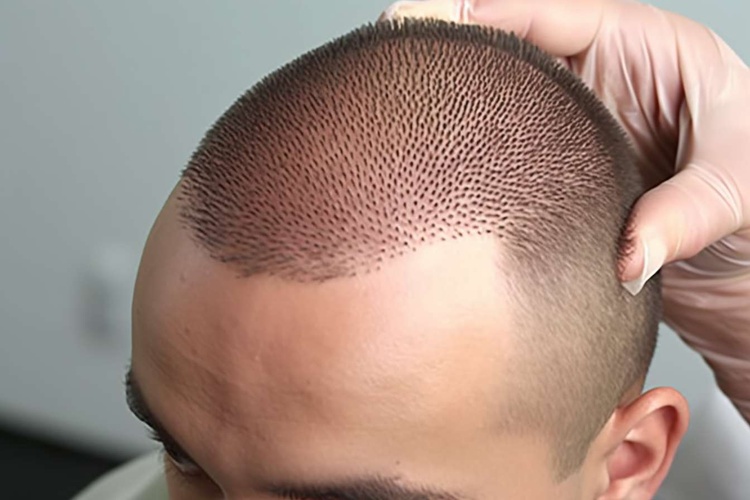Liposuction Explained: Complete Guide to Body Contouring
Explore how liposuction reshapes stubborn fat pockets using modern techniques such as ultrasound- and laser-assisted methods. This comprehensive guide explains who makes a good candidate, typical treatment areas, expected costs, recovery timelines, and long-term results to help you decide if surgical body contouring is right for you.

Liposuction is a surgical method used to remove localized fat deposits and refine body contours. While it isn’t a replacement for weight loss or a tool for obesity treatment, liposuction can effectively address fatty areas that resist diet and exercise. Since its introduction in the 1970s the procedure has advanced considerably, now including options like ultrasound-assisted and laser-guided techniques that improve precision and recovery.
Advanced Ultrasound-Assisted Liposuction Technology
Ultrasound-assisted liposuction (UAL) uses focused ultrasonic energy to loosen and emulsify fat before it is suctioned away. By breaking down fat cells first, UAL can make extraction smoother and more controlled, which may reduce trauma to surrounding tissues. This selective action can translate into more precise sculpting and, in some cases, a quicker recovery compared with traditional suction-only methods.
Modern liposuction also includes other adjunct technologies, such as laser-assisted and power-assisted systems. Each modality has strengths: ultrasound excels at treating dense or fibrous fat, lasers can tighten skin in some cases, and power-assisted devices reduce surgeon fatigue and allow for finer contouring. A board-certified plastic surgeon will recommend the technique best matched to your anatomy and goals.
Medical Considerations and Safety
A careful preoperative evaluation is essential to minimize risks and improve outcomes. Ideal candidates typically have a stable weight within about 30% of their ideal body weight, maintain reasonable skin elasticity, and hold realistic expectations about results. The following health factors are routinely assessed:
- Current medical conditions (heart disease, diabetes, clotting disorders)
- Past surgical history and any complications
- Medications and supplements that could affect bleeding or healing
- Smoking status, since smoking impairs circulation and wound recovery
- Overall physical fitness and ability to tolerate anesthesia
Full disclosure of medical history and medications helps the surgical team plan anesthesia, choose incision sites, and anticipate possible complications. In some cases, medical optimization—such as smoking cessation or adjusting medications—will be recommended before moving forward.
Body Areas Commonly Treated
Liposuction is most effective for focal fat deposits rather than generalized obesity. Frequently treated areas include:
- Abdomen and waist
- Thighs and hips
- Upper arms and the back
- Chin and neck
- Male chest (gynecomastia-related fat)
- Knees and ankles
Surgeons often combine liposuction of adjacent regions to create a balanced, proportionate result. The choice of technique and the volume of fat removed depend on the treatment area and the patient’s anatomy.
Understanding Costs and Provider Options
The price of liposuction varies widely depending on factors such as the number of areas treated, the complexity of the case, the technology used, the surgeon’s experience, anesthesia type, and the surgical facility. Geographic location and whether the procedure is performed in an accredited operating room also affect cost.
| Treatment Area | Average Cost Range | Typical Recovery Time |
|---|---|---|
| Small Areas (chin, knees) | $2,500 - $5,000 | 1-2 weeks |
| Medium Areas (arms, inner thighs) | $4,000 - $8,000 | 2-3 weeks |
| Large Areas (abdomen, back) | $6,000 - $12,000 | 3-4 weeks |
Prices, rates, or cost estimates mentioned in this article are based on current information and may change. Independent research is advised before making financial decisions.
Recovery and Fat Reduction Results
Recovery from liposuction generally unfolds over several weeks. Many patients return to light work within 1–2 weeks, though strenuous activity and heavy lifting should be avoided for longer—often 4–6 weeks—depending on the extent of surgery. Initial contour improvements become visible as postoperative swelling subsides, while the final shape typically settles in over 3–6 months.
Liposuction permanently removes fat cells from the treated regions. However, the remaining fat cells can still expand if a patient gains weight, so long-term results are best maintained through a healthy diet and regular exercise. Because the total number of fat cells in treated areas is reduced, those zones may be less likely to show the same degree of fat accumulation compared with untreated areas, but weight fluctuations can still affect overall appearance.
Choosing a Surgeon and Making an Informed Decision
Selecting an experienced, board-certified plastic surgeon is one of the most important steps to a safe and satisfying outcome. Ask to see before-and-after photos of similar cases, confirm the surgeon’s hospital privileges, and discuss anesthesia options and postoperative care. Request a clear breakdown of costs and what is included—surgeon fees, facility fees, anesthesia, garments, and follow-up visits—so there are no surprises.
Open communication about goals, potential risks, and realistic outcomes will help set appropriate expectations. If you have any health conditions or concerns, consider obtaining medical clearance from your primary care physician.
This article is for informational purposes only and should not be considered medical advice. Please consult a qualified healthcare professional for personalized guidance and treatment.





